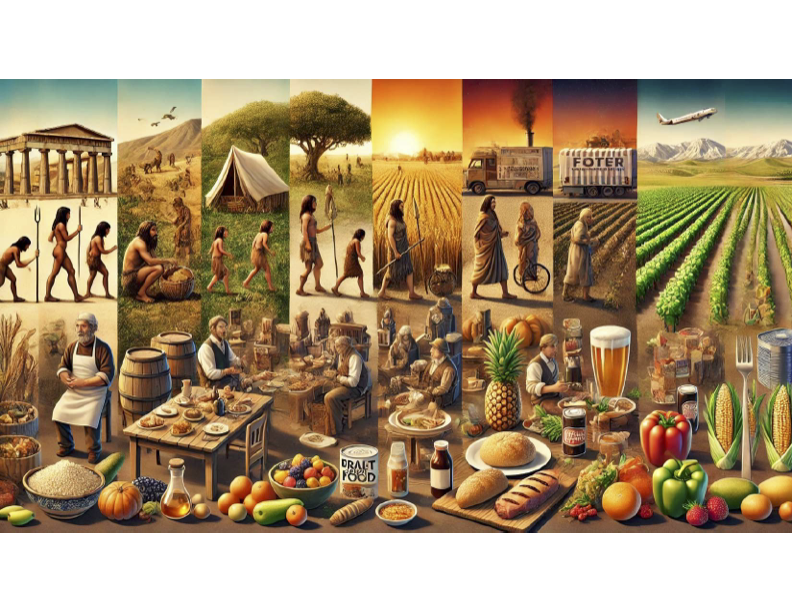Food is an essential part of human existence, but it is much more than just sustenance. Over thousands of years, food has evolved alongside humanity, shaping cultures, economies, and even civilizations. From the earliest hunter-gatherer diets to the rise of modern processed foods, the evolution of food is a fascinating journey that tells the story of human innovation and adaptation.
The Hunter-Gatherer Era
Before the advent of agriculture, early humans survived as hunter-gatherers, foraging for edible plants and hunting wild animals. Their diets were largely dictated by the environment, consisting of meat, fish, nuts, berries, and roots. This diet was rich in nutrients, but survival was unpredictable, as food availability depended on the seasons and the success of hunts.
The Agricultural Revolution
Around 10,000 years ago, the development of agriculture marked one of the most significant shifts in human history. People began cultivating crops such as wheat, rice, and maize, and domesticating animals for food. This shift allowed for more stable food sources, leading to the rise of permanent settlements and, eventually, complex civilizations. However, it also introduced challenges, such as food shortages due to crop failures and increased susceptibility to diseases from livestock.
The Rise of Trade and Global Influence
As civilizations grew, so did their trade networks. The Silk Road and other trade routes facilitated the exchange of spices, grains, and cooking techniques between distant regions. Ingredients such as tomatoes, potatoes, and chili peppers, native to the Americas, became staples in cuisines around the world after European exploration and colonization in the 15th and 16th centuries. The global exchange of food reshaped diets, giving rise to many of the beloved dishes we enjoy today.
The Industrial Revolution and Processed Foods
The 19th and 20th centuries brought the Industrial Revolution, which drastically changed food production. Mechanized farming, refrigeration, and food processing allowed for mass production and distribution of food. Canned goods, frozen meals, and preservatives became common, making food more accessible and reducing waste. However, this era also saw the rise of highly processed foods laden with artificial ingredients, leading to concerns over health and nutrition.
The Modern Food Movement
In recent decades, there has been a shift toward healthier, more sustainable food choices. The organic food movement, farm-to-table dining, and plant-based diets have gained popularity as people become more conscious of what they eat. Technology has also played a role, with lab-grown meat and alternative proteins offering new solutions for food security and environmental sustainability.
The Future of Food
Looking ahead, the evolution of food is far from over. Innovations in biotechnology, such as genetically modified organisms (GMOs) and vertical farming, aim to address food scarcity and climate change challenges. Additionally, alternative protein sources like insects and cultured meat may become mainstream as the world seeks sustainable food solutions.
Conclusion
The history of food is a testament to human ingenuity and adaptability. From foraging in the wild to engineering sustainable food sources, our relationship with food continues to evolve. As we move forward, the choices we make about food will shape not only our health but also the future of our planet.

